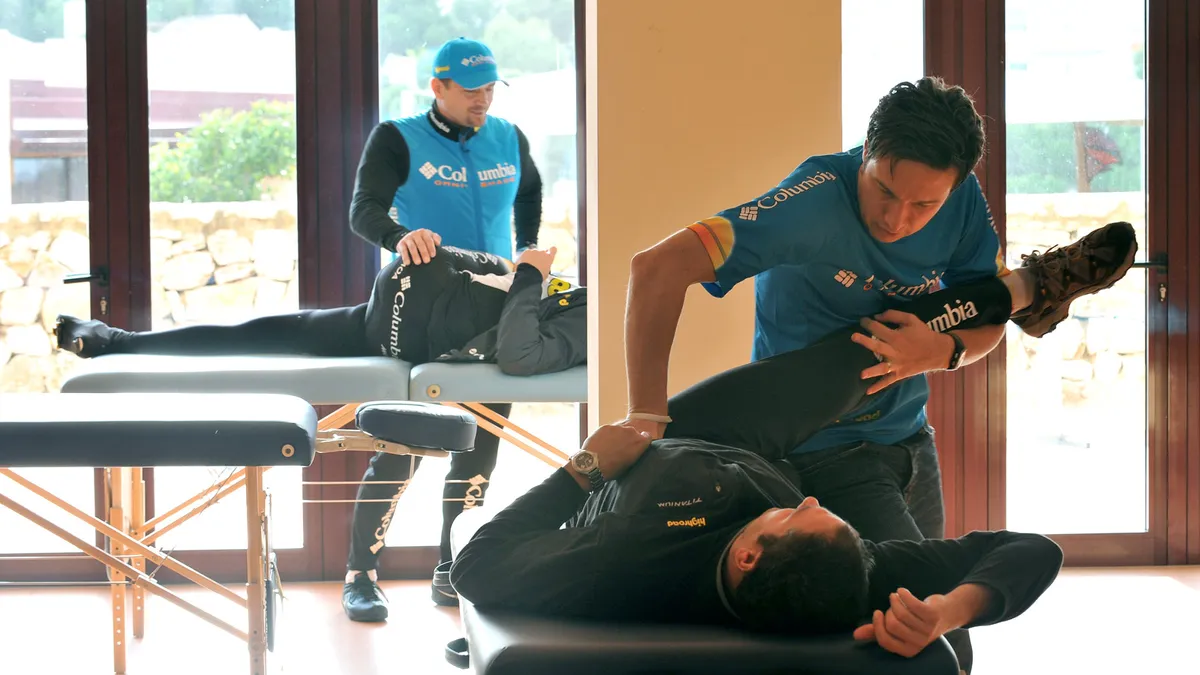Let's be honest, many of us regard anything other than actually turning the pedals as a waste of time, as far as improving cycling fitness is concerned. But according to the experts, we could be selling ourselves short.
“Becoming a better rider isn’t just about what you do on the bike,” says Andy Cook, former British Cycling coach and current director of Andy Cook Cycling. “Proper rest and recovery are just as much a part of the process of getting stronger, faster and fitter as riding.”
Tour de France winner Sir Bradley Wiggins agrees with him. “The importance of rest should never be underestimated,” he says. “It’s during rest that your body gets stronger.”
This is well documented by research – studies have shown that not allowing enough recovery time can lead to incomplete glycogen replenishment, increased levels of cortisol (a stress hormone) and decreased levels of human growth hormone (HGH) – factors that combine to make your performance suffer and leave you feeling sluggish and weak.
1. Take a break
Rather than riding hard continually until you feel exhausted then having to take a few days off, it’s best to have planned rest days, like the pros. “I do schedule rest days into my training programme, but it does tend to vary, depending on how heavy the workload is,” says Kristian House, pro rider for the Rapha Condor-JLT team. Wiggins agrees. “Rest is planned into my training programme, but I’ll also add in additional rest if I am under-performing in training,” he says. “I’ve learned to listen to my body, and as much as I might want to ride on a rest day, I know it won’t help.”
The pros’ approach demonstrates the importance of being flexible about your training programme. “Work, social and other life commitments might dictate when you can’t train, so make those your rest days and build your training programme around that,” advises Cook.
But how much rest do you need? This is very individual and it depends on all kinds of things – from what other demands you have on your time and how fit you are, to your age and your goals. Since his return to pro cycling in 2003 at the age of 42, Malcolm Elliott has said that he sometimes needs two consecutive rest days to be able to perform at his peak.
Cook believes there are no set rules about how much rest you should take, but there are general principles, such as “following hard training days with easy days or rest, and adopting a three weeks hard, one week easy approach to training”. If you structure your training with built-in periods of rest and recovery, you’ll have to take fewer ones due to illness, fatigue or injury.
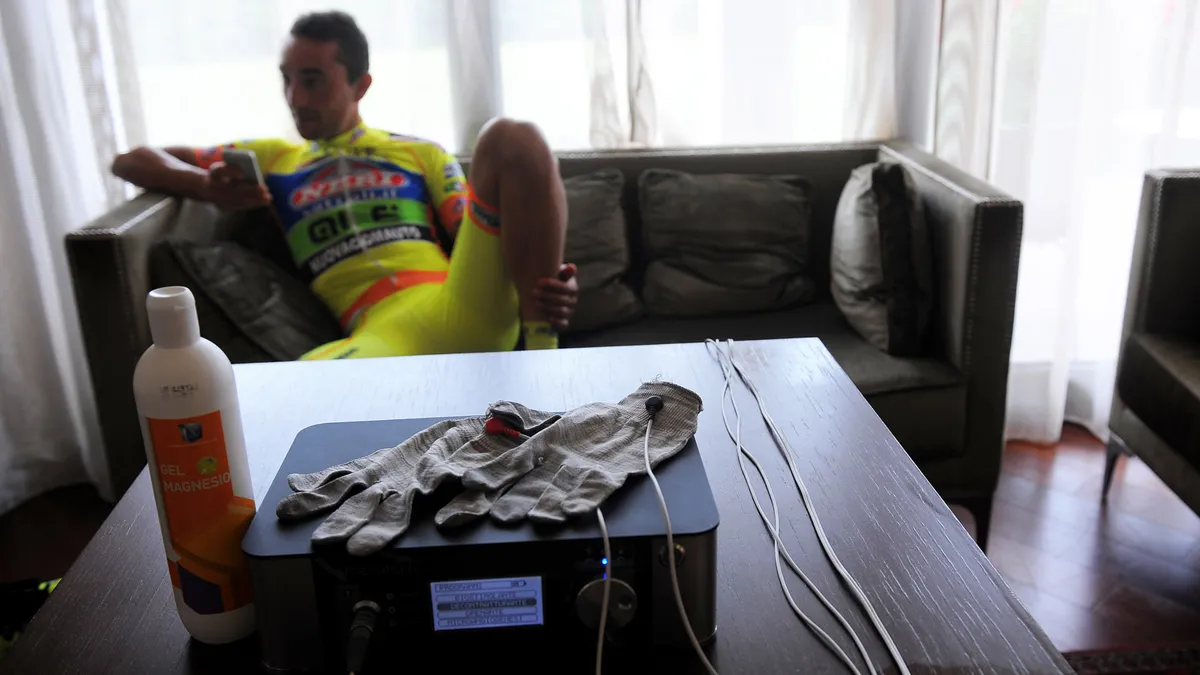
But before you dive onto the sofa, bear in mind that recovery doesn’t just involve doing nothing. While rest is essential to your recovery strategy, it isn’t the only factor. In fact, a study from the University of Victoria in Canada found three different ‘active’ recovery practices (low-intensity exercise, massage and ice) helped recovery between bouts of high-intensity cycling more than passive rest.
Equally, rest doesn’t always mean, er, rest. While Wiggins takes one full day of rest per week, for example, he also incorporates ‘recovery rides’ into his schedule.
Kristian House, meanwhile, says a rest day could mean a two-hour easy ride on flat roads. While research in the International Journal of Sports Medicine supports the idea of active recovery, Cook believes you should proceed with caution. “An easy session can so easily become a competitive ride against friends or the clock,” he says. “Push yourself too hard and you’ve wasted your rest day.”
2. Raid the fridge
“As far as nutrition is concerned, the two most important issues for recovery are timing and quality,” says Karen Reid, registered sports and exercise nutritionist, dietician and creator of the website performancefood.co.uk.
Wiggins agrees. “Hydration and nutrition during a hard ride are essential to keep going, but it’s what I take onboard afterwards that allows my muscles to adapt and grow stronger,” he says. “Fast recovery after every session is crucial, so I have to make sure I’m ready and raring to go for the next one, which is often on the same day. I use For Goodness Shakes! recovery shakes, which are ready-mixed and contain the perfect balance of carbs and protein.”
Milk-based recovery drinks like these have found favour among the sport science bods recently. For example, a study at Northumbria University compared the effects of a traditional carbohydrate sports drink with water and a milk-based drink on recovery and subsequent performance. The cyclists taking the milk drink performed best in the second exercise bout, indicating that they had recovered better than the other two groups.
Reid breaks the recovery process down into three phases: rehydration, replenishment and repair. “In dietary terms, that means you need fluid and electrolytes, the right amount of easily absorbed carbohydrate and a good quality source of protein,” she explains. “You have to get these steps in the right order, because if the cells are dehydrated, you can’t transport nutrients to them – nor can you synthesise glycogen, as each gram is stored with 4g of water. Proper rehydration has to come first.”
But what’s the best option? Well, a sports drink will provide fluid, electrolytes and some carbohydrate, so it’s a good all-rounder. But if you’ve been guzzling sports drink on the bike all day, you may find that the last thing you want is something else sugary, in which case, water, along with a salty snack, is a good option. “There isn’t sufficient salt in the commercial sports drinks, so I get my athletes to eat something like pretzels or Snack a Jacks,” says Reid. “This stimulates thirst, as well as replacing electrolytes.”
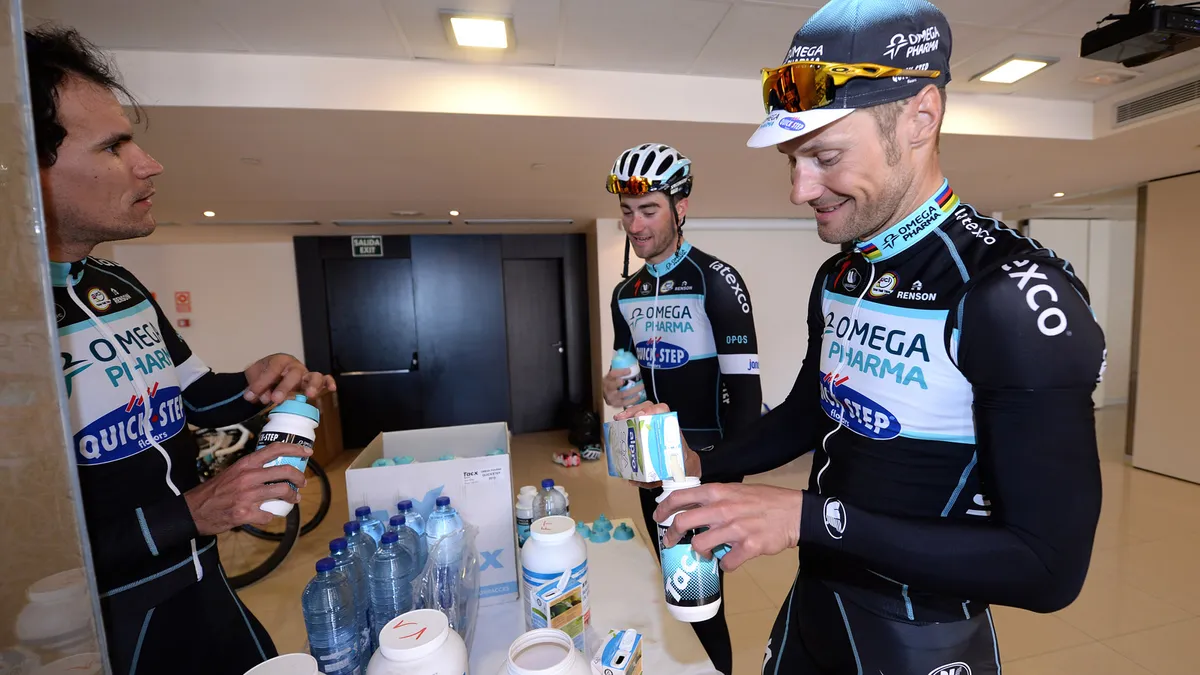
Step two is replenishment, primarily of depleted glycogen (carbohydrate) stores.
“A sandwich with a savoury filling, or a milkshake along with a piece of fruit, helps to provide carbohydrate calories and some antioxidants to help deal with the oxidative stress placed on the body.” Aim to consume 1g of carbohydrate per kg of body weight, along with 10-20g of protein – and do it as soon as possible.
While the window of opportunity that exists in the 20 to 30 minutes after training is the optimal time to refuel, Reid says there isn’t so much urgency if you aren’t going to be doing another session that day or the following morning – though you should still eat within a couple of hours of training.
Repair is the final stage of the nutrition strategy. This refers both to the immune system and muscle tissue. “It’s very common to do a tough session and then come down with a nasty bug a couple of days after, as the immune system is suppressed,” says Reid. Research shows that taking protein along with your carbohydrates post-exercise can help attenuate this, as well as stimulating muscle repair. “I find that oily fish is really good for damping down inflammation and muscle soreness,” says Reid.
Your armoury against infection should also include plenty of fresh fruit and vegetables. “There’s much more supportive evidence for food-derived compounds than for vitamin and mineral supplements, in terms of maintaining good health.”
As important as nutrition is to recovery, then, it doesn’t necessarily mean having a cupboard full of expensive recovery products. “There’s nothing wrong with commercial recovery products – and they have their place, but real food is preferable,” believes Reid. “The ultimate goal is to ensure that you go to bed with everything in equilibrium, because this is when the body repairs itself.”
3. Have a rub down
The jury is still out on how – as well as if – massage really works. It’s a difficult subject to study objectively because the effects can be both physical and mental, and who’s to say that one is less important than the other? A study from Canada, for example, assessed the effects of massage on markers of physiological damage and found no benefit – but the massage was still perceived as ‘beneficial’ by the participants who took part in the study.
House believes massage is an important component of recovery. “Like a lot of this stuff, it’s important not just for the body, but for the head, too. If you’re getting a massage and stretching as well as using compression tights, for example, you know you’re preparing well for your event, and that’s a psychological bonus,” he says.
Wiggins also believes that massage is an essential part of the sport, and something that all cyclists could benefit from. If you schedule it in regularly, the other advantage is that the therapist will be able to spot the early warning signs of impending injury, such as areas of tension or adhesions – and then work to help you avert the problem.
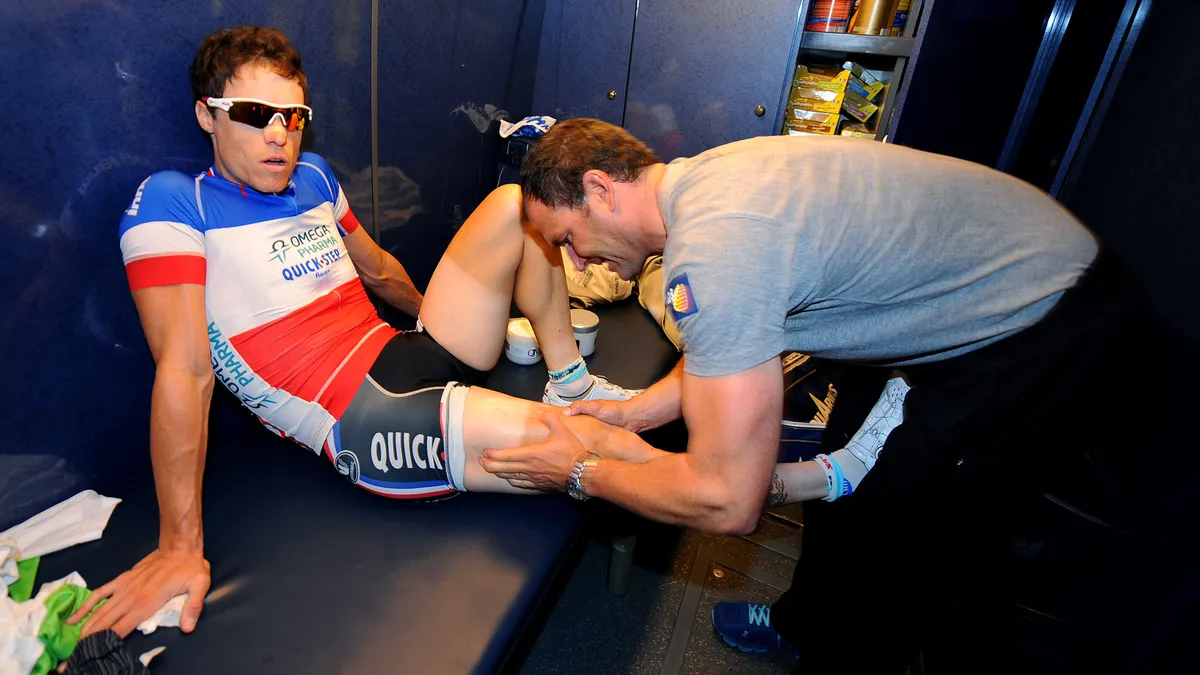
If you do decide to opt for a rubdown – and why shouldn’t you? – when is the best time to have it? House never gets a massage when he’s doing split days of racing, believing that it tends to deaden his legs. A post-event massage is a better bet, but avoid anything too vigorous in the hours following a very tough race or training session, when muscle damage is still occurring.
It’s best to wait two or three days, when you can benefit from a deeper, more remedial treatment. And if you don’t have a therapist or a willing volunteer, you can always massage your legs yourself – working towards the heart. Many therapists swear by arnica cream – according to research in Advances in Therapy it contains pharmacologically active components with an anti-inflammatory effect to reduce exercise-induced muscle soreness.
Contact the Sports Massage Association to find an accredited practitioner.
4. Get a good night’s sleep
It stands to reason that you need to get your zzzzs in if you’re going to perform at your best. Do athletes need more sleep? According to a study from Wheaton College in the US, they do. The researchers found that sleep deprivation amounting to 30 to 36 hours could reduce cardiovascular performance by an alarming 11 per cent.
Thirty-plus hours might sound like a lot of deprivation, but if you consistently get six hours per night when you should sleep for eight, you’ll accumulate a deficit of this amount in little over a fortnight. As well as compromising the immune system, which could force you to lose valuable training time through illness, insufficient sleep means reduced levels of anabolic (muscle-building) hormones, impaired concentration and even mood shifts.
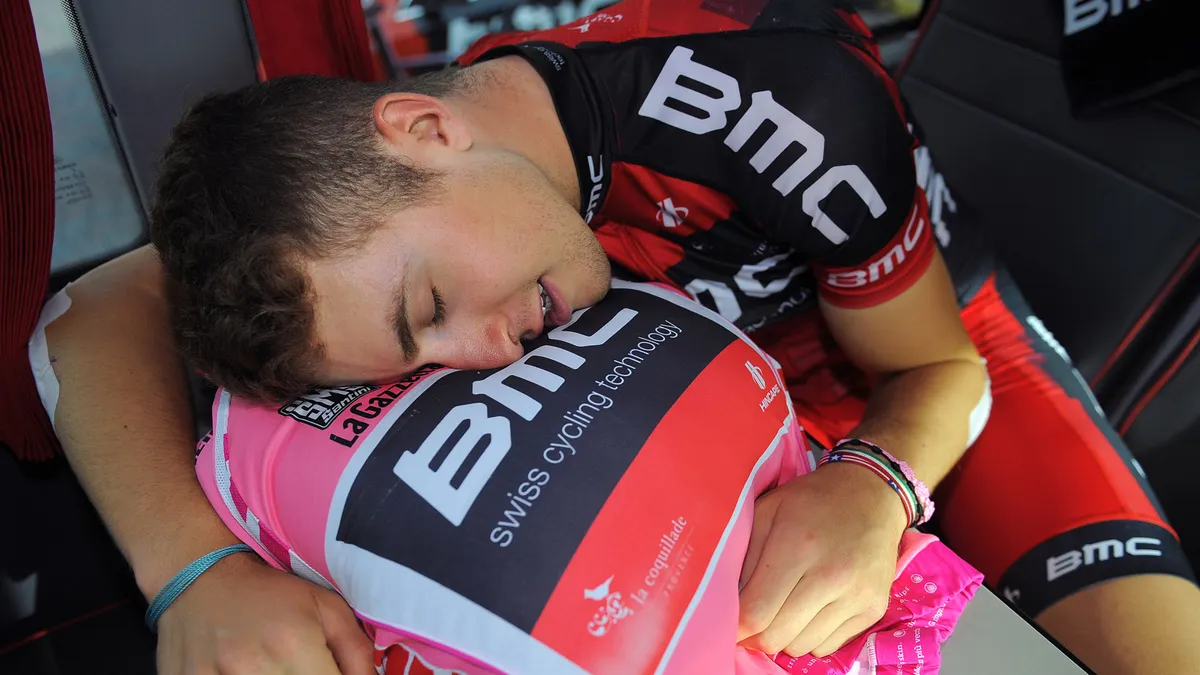
If you can’t get the requisite eight hours or so at night, try to fit in a daytime nap. Ideally, right after a hard training session. It will aid recovery as well as give you more energy for the remainder of the day.
Incorporate some or all of these recovery strategies into your personal programme, and not only will you stop falling asleep at dinner parties and coming down with colds, you’ll also be powering up those hills with ease.
5. Wear compression tights
While runners and triathletes have embraced compression garments with enthusiasm, it’s less common to see cyclists donning them. But Kristian House is a fan – and for good reason. Studies, including one published in the Journal of Sports Science and Medicine, have shown that they can help accelerate recovery by allowing faster cell repair, although some studies, such as this Australian one we reported, have found there to be very little difference other than that perceived.
But not all compression clothing ranges are created equal. According to research in the Canadian Journal of Sport Science, the pressure exerted by a compression garment must be graduated or graded, in order to mimic the haemodynamic (blood flow) effect of exercise and to increase venous return. In other words, the compression should be greatest at the bottom and exert less pressure further up.
Skins, 2XU and Linebreak all use graduated compression in their garments, but according to Mark Gladwin from Linebreak, some branded clothing doesn’t carry the therapeutic benefits of graded muscle compression and is simply tight-fitting. So shop carefully, or you’ll look silly for little gain in actual recovery.
